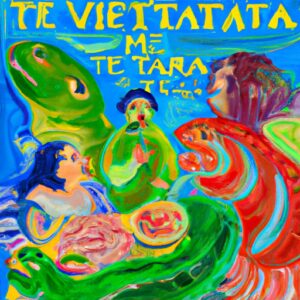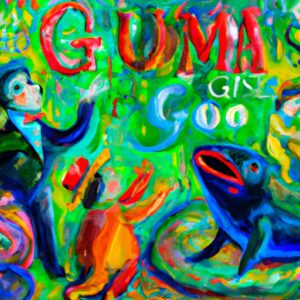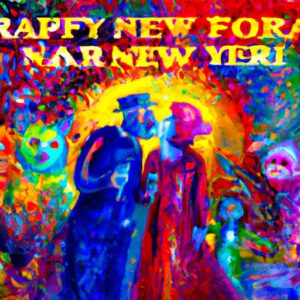Discover a vibrant collection of Italian adjectives that beautifully capture the essence of enchanting places in Italy. Immerse yourself in linguistic bliss!
As a language enthusiast and frequent traveler to Italy, I have always been fascinated by the beauty and diversity of Italian places. Italy is a country with a rich history, culture, and natural landscape that can take your breath away.
However, to truly appreciate and communicate the essence of Italian places, it is important to have a good grasp of Italian adjectives for describing them. In this article, I will unveil the secrets of Italian adjectives for describing places, from basic rules to regional differences and common mistakes to avoid.
Basic rules for using Italian adjectives
Before diving into the specific adjectives for describing Italian places, it is important to understand some basic rules for using Italian adjectives. In Italian, adjectives agree in gender, number, and sometimes even in the first letter with the noun they modify.
For example, if you want to describe a beautiful city, you need to know whether the noun “city” is feminine or masculine and whether it is singular or plural. If the noun is feminine and singular, you need to use the adjective “bella” (beautiful) in its feminine singular form, as in “una bella città” (a beautiful city).
If the noun is masculine and plural, you need to use the adjective “belli” (beautiful) in its masculine plural form, as in “dei bei paesaggi” (some beautiful landscapes).
Another important aspect to consider is the position of the adjective. In Italian, adjectives usually come after the noun they modify, unlike in English where they come before the noun.
However, in some cases, such as with possessive adjectives (e.g. “my,” “your,” “his”), they come before the noun. For example, “il mio libro” (my book) and “la tua casa” (your house).
Adjectives to describe the beauty of Italian cities
Italian cities are known for their beauty, charm, and history. From the ancient ruins of Rome to the romantic canals of Venice, each city has its unique character and atmosphere.
Here are some Italian adjectives to describe the beauty of Italian cities:
Bella/bello (beautiful): This is a versatile adjective that can be used to describe anything from architecture to the people and the scenery. For example, “una bella città” (a beautiful city) or “un bel panorama” (a beautiful view).
Incantevole (enchanting): This adjective is perfect for describing the magical and captivating atmosphere of some Italian cities, such as Florence or Siena. For example, “un incantevole borgo medievale” (an enchanting medieval village).
Pittoresco (picturesque): This adjective is often used to describe the colorful and charming aspects of Italian cities, such as the narrow alleys, the local markets, or the traditional houses. For example, “un pittoresco quartiere” (a picturesque neighborhood).
Fascinoso (fascinating): This adjective is ideal for describing the intriguing and captivating aspects of Italian cities, such as the museums, the art galleries, or the historical sites. For example, “un fascinoso museo archeologico” (a fascinating archaeological museum).
Adjectives to describe the architecture of Italian buildings
For its beauty, sophistication, and variety, Italian architecture is recognized. Italian architecture showcases the rich historical and aesthetic heritage of the nation, from the Gothic cathedrals of Milan to the Renaissance palaces of Florence.
Italian adverbs that describe the style of Italian buildings include the following:
Elegante (elegant): This adverb perfectly captures the elegant and sophisticated features of Italian architecture, like facades, columns, and arches. As in “un elegante palazzo rinascimentale” (an elegant Renaissance palace).
Maestoso (majestic): This adjective is ideal for describing the grand and imposing aspects of Italian buildings, such as the domes, the towers, or the statues. For example, “una maestosa cattedrale gotica” (a majestic Gothic cathedral).
Antico (ancient): This word is frequently used to define the historical and cultural importance of structures in Italy, such as forts, castles, and ruins. Consider “un antico castello medievale” (an old medieval castle).
Colorato (colorful): This adjective is perfect for describing the vibrant and lively aspects of Italian buildings, such as the frescoes, the mosaics, or the tiles. For example, “un colorato campanile romanico” (a colorful Romanesque bell tower).
Adjectives to describe the landscape of the Italian countryside
From the undulating hills of Tuscany to the untamed coastline of Amalfi, the Italian countryside is a veritable treasure trove of scenic splendor. Visitors may be deeply affected by a region’s distinctive terrain, flora, and fauna.
Here are some adjectives used in Italian to describe the countryside of Italy:
Pittoresco (picturesque): The Italian countryside’s picturesque and idyllic features, such as vineyards, olive groves, and sunflower fields, are perfectly captured by this adverb. For instance, “un pittoresco paesaggio collinare” (a lovely hilly setting).
Selvaggio (wild): This adjective is ideal for describing the rugged and untamed aspects of the Italian countryside, such as the mountains, the forests, or the lakes. For example, “una selvaggia riserva naturale” (a wild nature reserve).
Luminoso (bright): The beaches, cliffs, and islands—along with other sunny and upbeat elements of the Italian countryside—are frequently referred to using this adverb. A bright sandy beach, for instance, is referred to as “una luminosa spiaggia sabbiosa”.
Rustico (rustic): This adverb is ideal for capturing the genuine and conventional features of the Italian countryside, such as farmhouses, barns, and stables. As an illustration, “un rustico agriturismo” (a rustic farm stay).
Adjectives to describe Italian cuisine and food places
Italian cuisine is famous all over the world for its freshness, simplicity, and variety. From the pizza in Naples to the gelato in Florence, Italian food can satisfy any taste and budget.
Here are some Italian adjectives to describe Italian cuisine and food places:
Gustoso (tasty): The rich and flavorful elements of Italian cuisine like pasta, risotto, or shellfish are ideal candidates for this adverb. For instance, “un gustoso piatto di spaghetti alla carbonara” (a delicious dish of carbonara spaghetti).
Fresco (fresh): The nutritious and healthy qualities of Italian products like tomatoes, basil, and mozzarella are perfectly captured by this adverb. An illustration might be “una fresca insalata caprese” (a fresh Caprese salad).
Accogliente (welcoming): This adjective is often used to describe the friendly and cozy atmosphere of Italian food places, such as the trattorie, the pizzerie, or the gelaterie. For example, “un’accogliente trattoria in centro” (a welcoming trattoria in the city center).
Autentico (authentic): This adjective is perfect for describing the genuine and traditional aspects of Italian food, such as the regional specialties, the family recipes, or the slow food. For example, “un autentico ristorante toscano” (an authentic Tuscan restaurant).
Adjectives to Describe the Atmosphere of Italian Places
Italian places are not only about the physical beauty or the culinary delights but also about the emotional and social experience. From the lively piazzas of Rome to the romantic alleys of Venice, Italian places can evoke different moods and feelings.
Here are some Italian adjectives to describe the atmosphere of Italian places:
Vivace (lively): This adverb is ideal for conveying the lively and dynamic elements of Italian locations, such as the markets, festivals, or nightlife. Like “una vivace piazza di Napoli” (a bustling square in Naples).
Romantico (romantic): An Italian location’s attractive and private features, like its canals, bridges, or gardens, are best described using this adverb. As an illustration, “un romantico ponte di Venezia” (a romantic bridge in Venice).
Tranquillo (peaceful): This adjective is often used to describe the serene and relaxing aspects of Italian places, such as the parks, the beaches, or the countryside. For example, “un tranquillo giardino pubblico” (a peaceful public garden).
Familiare (familiar): This adverb perfectly conveys Italian locations’ quaint and private features, like canals, bridges, or gardens. One such phrase is “un romantico ponte di Venezia” (a romantic bridge in Venice).
Regional differences in Italian adjectives for describing places
Italy is a country of regions, each with its unique culture, dialect, and traditions. Therefore, Italian adjectives for describing places can vary depending on the area you are in or the type of place you are describing.
For example, in Northern Italy, you might use the adjective “elegante” (elegant) more often, while in Southern Italy, you might use the adjective “caldo” (warm) more often.
Similar to how you may use the word “marittimo” (coastal) more frequently when describing a coastal town, you might do the same when describing a mountain hamlet using the adjective “montano” (mountainous). Understanding these regional variations is crucial, and you should modify your terminology accordingly.
Common mistakes to avoid when using Italian adjectives
Finally, here are some common mistakes to avoid when using Italian adjectives for describing places:
- Forgetting the agreement in gender, number, and letter with the noun
- Using the wrong form of the adjective (e.g. using “bello” instead of “bellissimo” for “very beautiful”)
- Placing the adjective before the noun (except for some possessive adjectives)
- Overusing the same adjectives or using cliché expressions (e.g. “bella Italia” or “magnifico panorama”)
- Ignoring the regional differences and cultural nuances of Italian adjectives.
Learn more about Italian adjectives
In conclusion, Italian adjectives for describing places are an essential part of the Italian language and culture. By mastering these adjectives, you can enhance your communication skills, appreciate the beauty of Italian places, and connect with the local people and traditions.
Remember to follow the basic rules, use a variety of adjectives, adapt to regional differences, and avoid common mistakes. With these tips and secrets, you can unveil the magic of Italian adjectives and enrich your travel experience in Italy. Buon viaggio!










One Response
Wow, this is so helpful! I’ve always wanted to learn some Italian adjectives to describe the beautiful places in Italy. Grazie mille!
Marco:
This is exactly what I needed! Thank you for sharing these adjectives. Now I can better describe my favorite places in Italy when I talk to my friends.